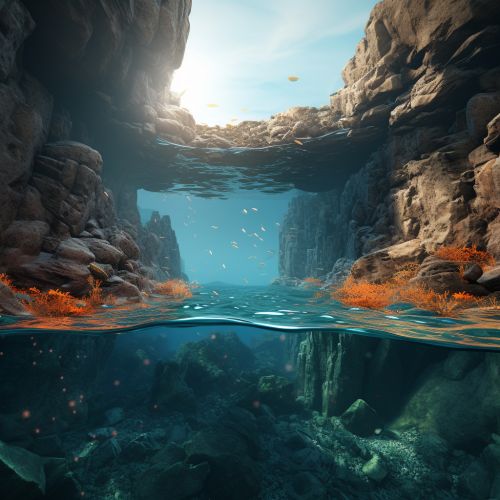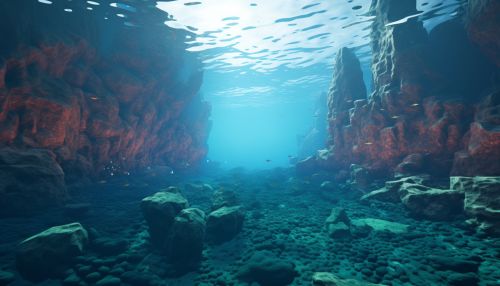Divergent Boundary
Introduction
A divergent boundary is a geological term that refers to the location where tectonic plates are moving away from each other. This process results in a gap that allows magma from the Earth's mantle to rise to the surface, forming new crust. Divergent boundaries are primarily found in the ocean, where they form mid-ocean ridges, but can also be found on continents, leading to the creation of rift valleys.


Geological Processes
The geological processes at work at a divergent boundary are primarily driven by the heat from the Earth's core. This heat creates convection currents in the mantle, causing the overlying tectonic plates to move. As the plates move apart at a divergent boundary, magma rises to fill the gap, solidifying to form new crust. This process is known as seafloor spreading when it occurs under the ocean, and continental rifting when it occurs on land.
Features of Divergent Boundaries
Divergent boundaries are characterized by several distinctive features. These include mid-ocean ridges, rift valleys, and volcanic activity.
Mid-Ocean Ridges
Mid-ocean ridges are underwater mountain ranges that form at divergent boundaries in the ocean. They are the longest mountain range on Earth, stretching over 65,000 kilometers. The Mid-Atlantic Ridge, for example, is a well-known mid-ocean ridge that runs down the center of the Atlantic Ocean.
Rift Valleys
Rift valleys are features that form at divergent boundaries on land. As the tectonic plates move apart, the land between them sinks, forming a valley. The East African Rift is a prime example of a rift valley, stretching from the Red Sea in the north to Mozambique in the south.
Volcanic Activity
Volcanic activity is common at divergent boundaries due to the upwelling of magma. This can result in the formation of new islands, such as those found in the Icelandic portion of the Mid-Atlantic Ridge.
Impact on Life and Environment
The geological activity at divergent boundaries can have significant impacts on the surrounding environment and life forms. The creation of new crust can lead to the formation of new habitats, both on land and in the ocean. The volcanic activity can also provide nutrients that fuel primary production, supporting diverse ecosystems.
